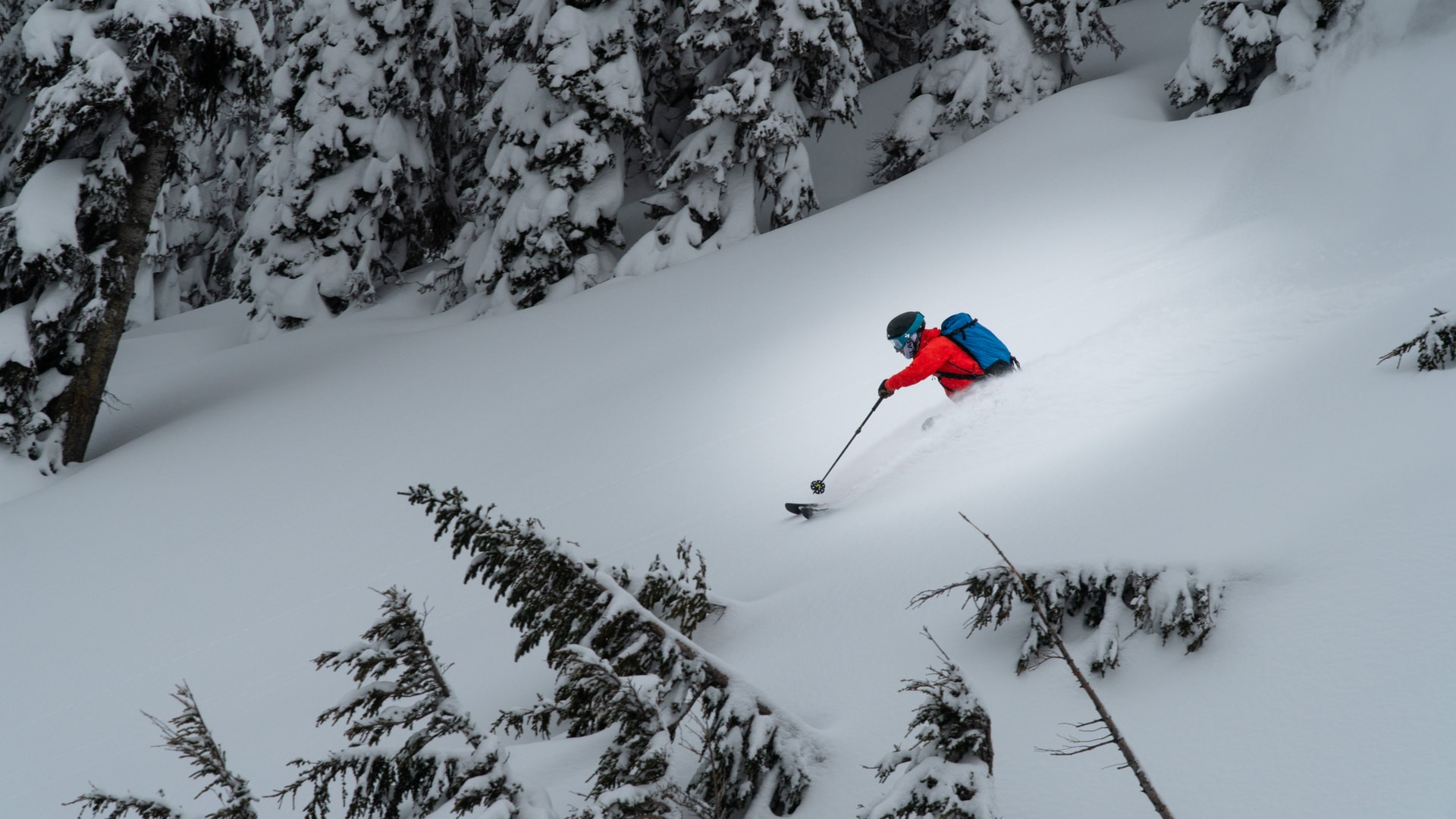The McGill Main Chutes, located on the aptly named McGill Shoulder, is an absolute gem of the Bostock Area within Rogers Pass. If you can spare the energy for a 1200m climb, the descent down the two nearly identical avalanche paths (slidepaths) to the Bostock trail makes for a 900m run through open terrain, old-growth patches, and huge pillows to finish it off. During times of heightened avalanche hazard, you’ve also got conservative options peppered along the McGill Shoulder: McGill Glades and the Gunbarrels, all linking up with the bottom of the Main Chutes. Beware, this particular terrain is facing SW. It gets burnt to a crisp when the skies are clear affecting snow quality and stability. Lastly, I recommend staying at or above the level of the Bostock Trail – it’s your highway back to the parking lot. The last thing you’d want is to make a 15-minute transition to gain 50m of vertical.
This route is located within a Winter Restricted Area (WRA) governed by the Winter Permit System. Please check the WRA status before travelling through it.
Related: McGill Shoulder Rogers Pass: Stiff Slabs and Bare Ice
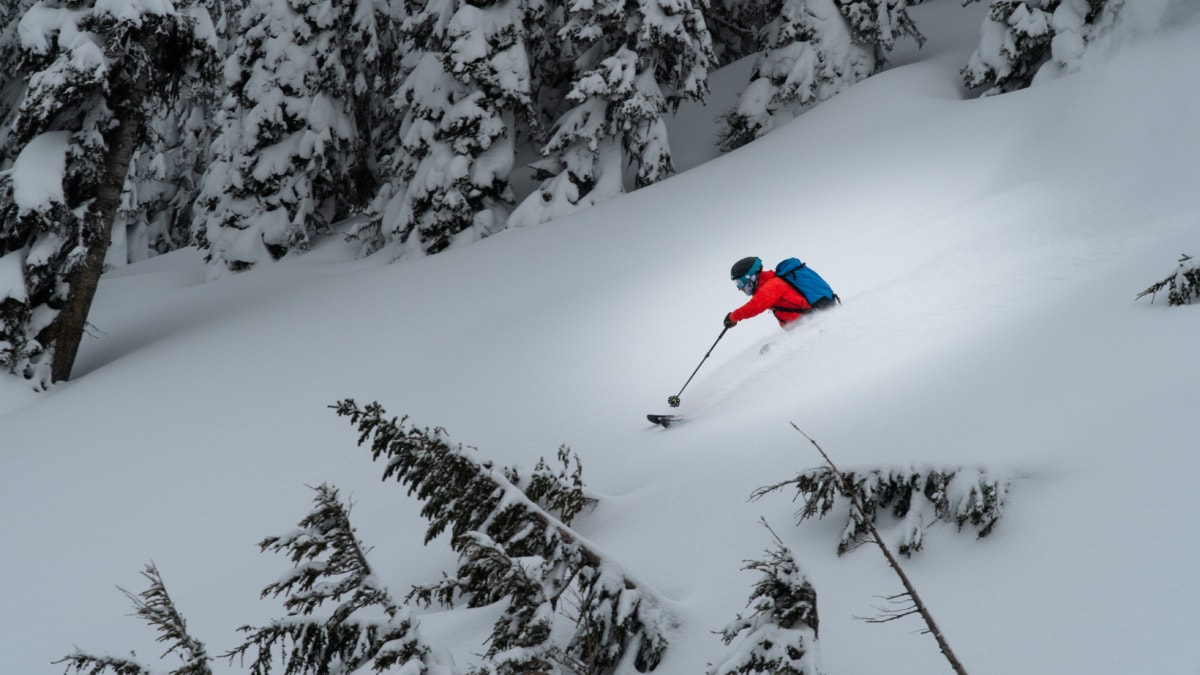
Report from January 22, 2022
Freddy and I arrived at the Bostock parking lot at 8:15 AM. With the weather being a big ol’ “meh” of poor visibility and questionable snowpack stability, we decided to revisit a classic, the McGill Main Chutes. The area had been closed for two days prior due to highway avalanche control. We figured the run would offer some excellent powdery skiing and remain conservative enough for the hazard at play (several persistent weak layers buried throughout the snowpack). We slogged up the McGill Shoulder through the denser, bushier forest of the Northern Selkirks, staying on the top of its crest. We were trail-breaking the whole time – I bet the groups behind us enjoyed that.
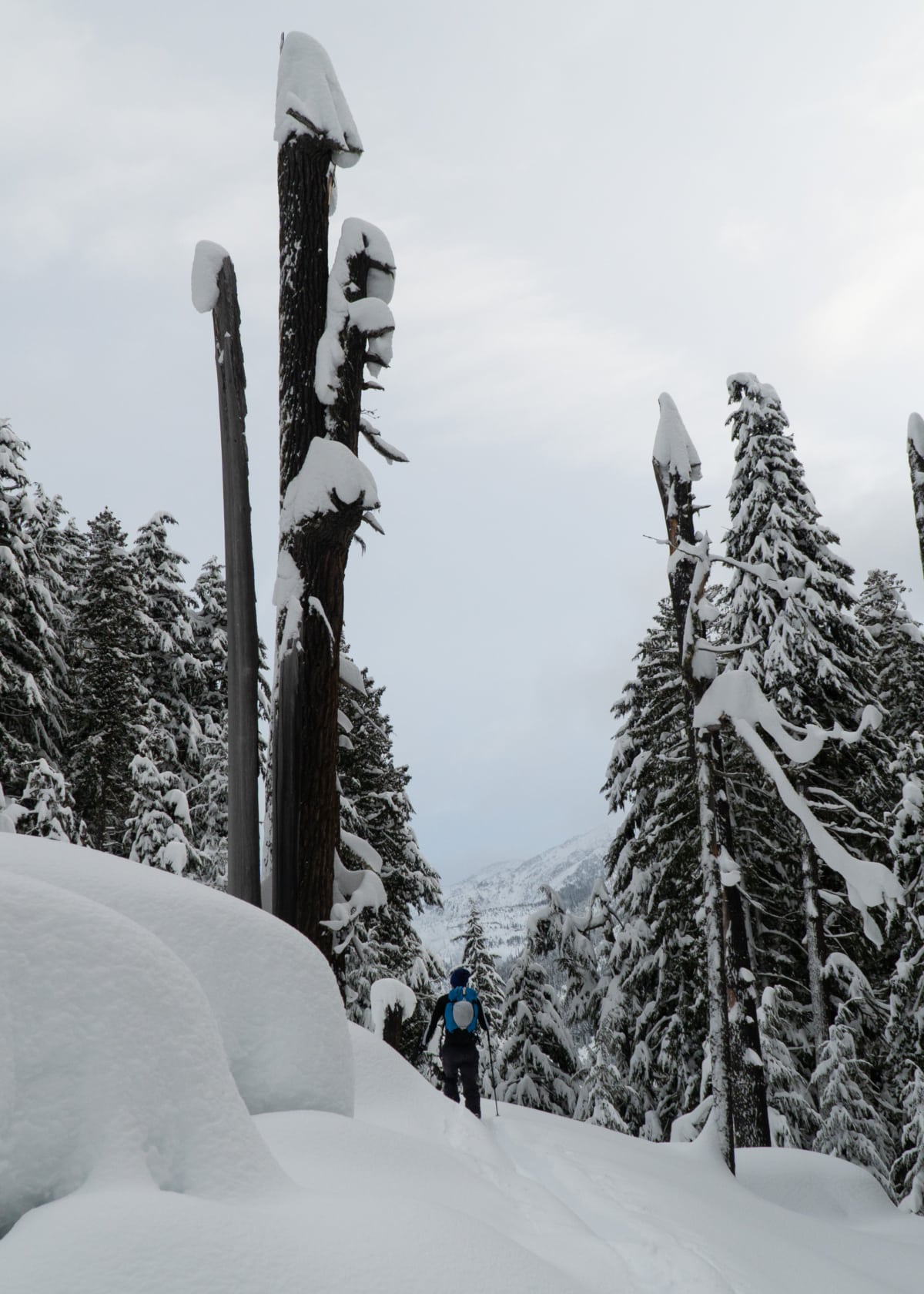
At 1600m (the magic elevation), the trees started thinning out considerably, making route-finding a whole lot easier. As we were trenching through more than 40cm of light and dry powder, the sun pierced through the clouds. What a heartwarming surprise! We could barely see the peaks across the Trans-Canada Highway corridor.
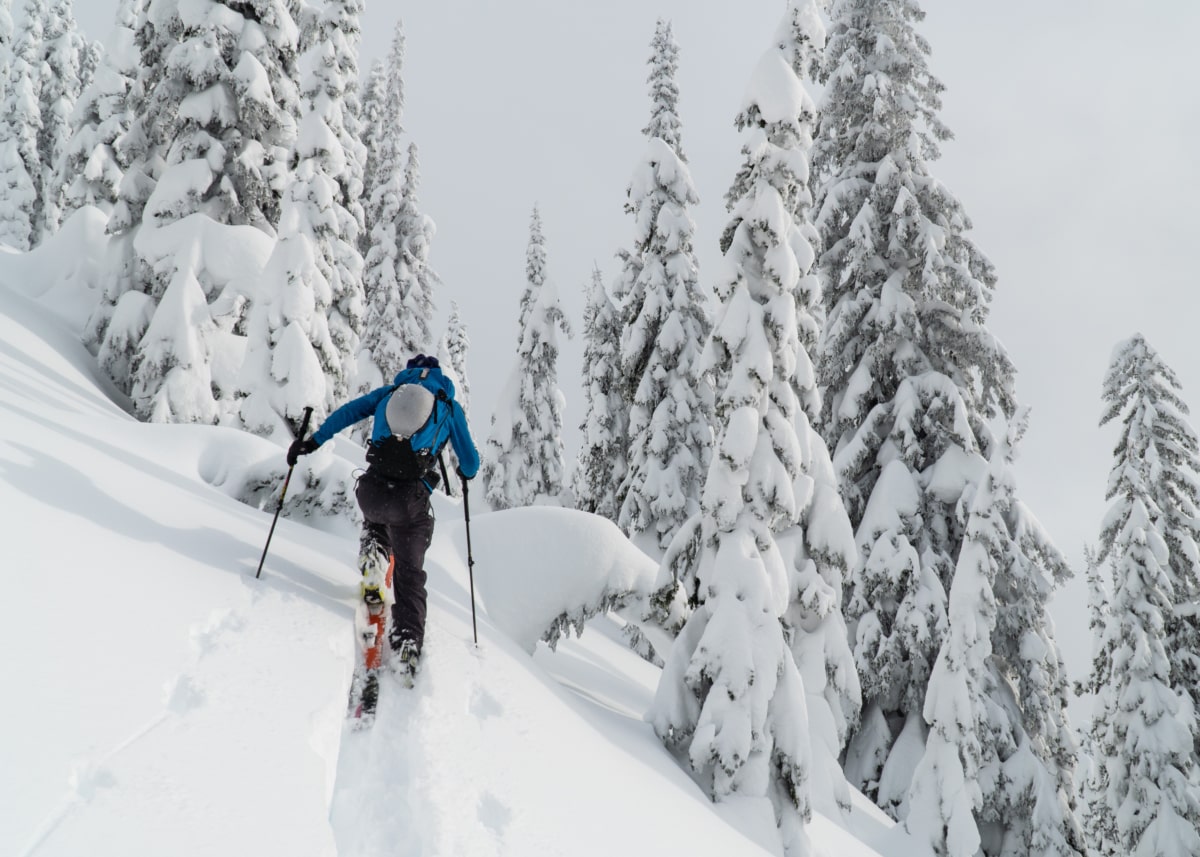
After much effort (and sweat), we reached the treeline where the top of the McGill Main Chutes is located at 2130m. We crossed the crest of the shoulder onto the SW aspect, punching through a few cornices lined up on the ridge. We followed a high traverse, crossing above the Gunbarrels, two straight cleared paths through the trees. Those are awesome options during bouts of heightened avalanche hazard since the potential for large destructive avalanches within this feature is limited.
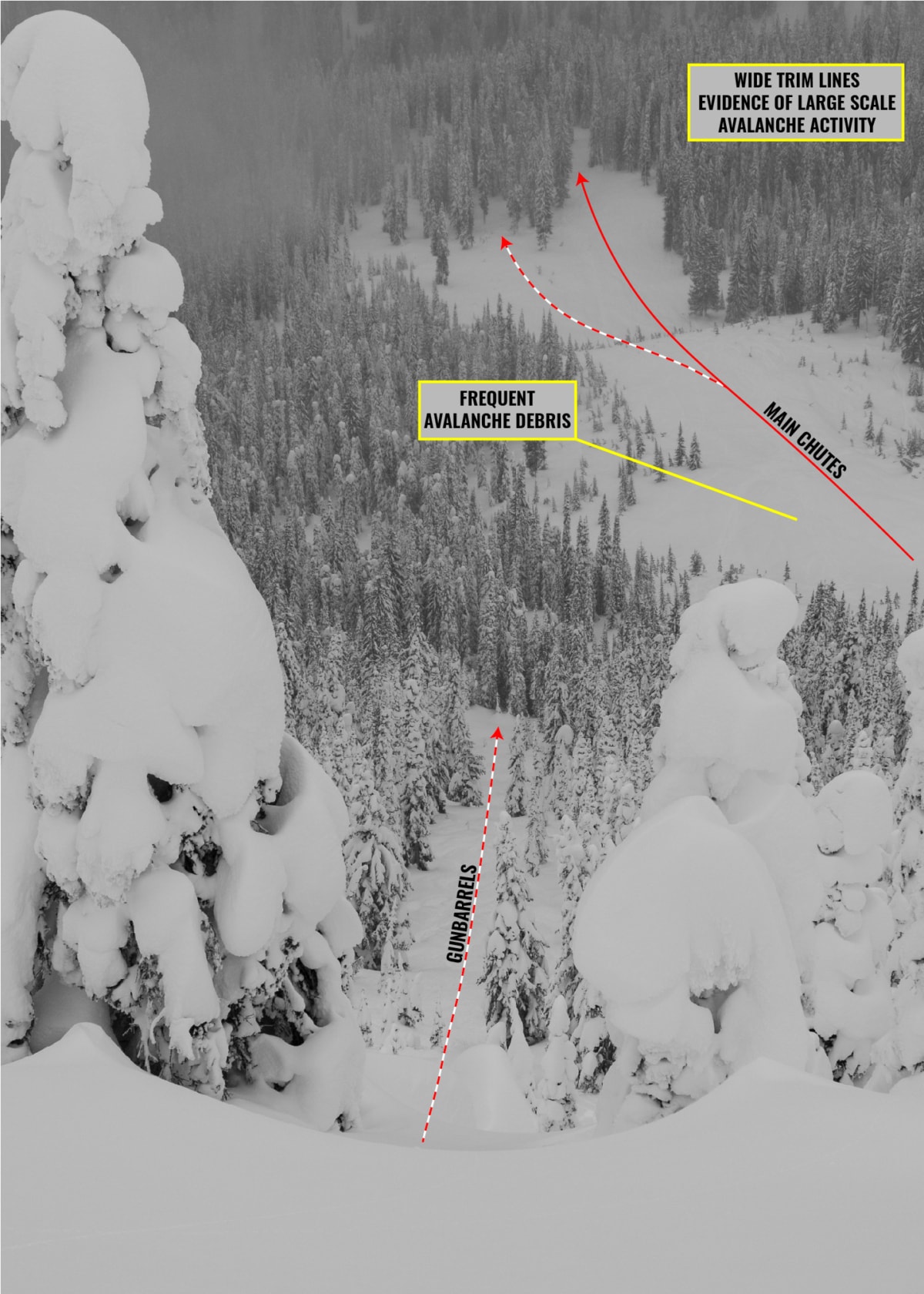
We dug a test profile to assess the snowpack instabilities. A thick later of faceted crystals had been buried the week prior. Several natural and skier-triggered avalanches had slid on this persistent weak layer. When our test results showed the layer was stubborn to release, we transitioned for the descent. During our change-over, we spotted a giant crown along the top of both chutes, evidence of past serious avalanche activity. It was clear the guts would be icy and littered with death cookies but the trim lines on both sides of the slidepath were untouched. The area hadn’t been skied yet (a perk of cutting your own uptrack) so we dove right into the first of the McGill Main Chutes.
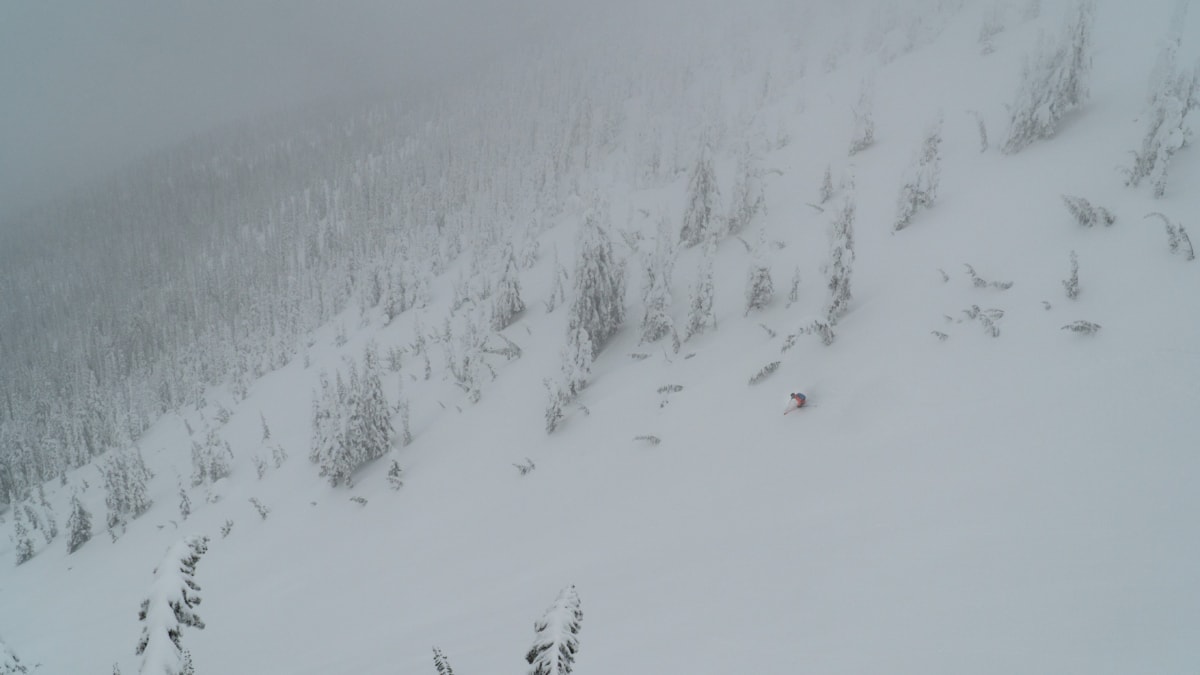
I followed the crown across the first chute, stumbling a few times on buried debris and ducked into sparse trees to the skier’s right. Boy, was the snow incredible! This is the kind of snow dreams are made out of! As soon as we reached the bottom of the path, we slowed right down. We crossed over the rough avalanche debris and veered in the forest to the skier’s left.
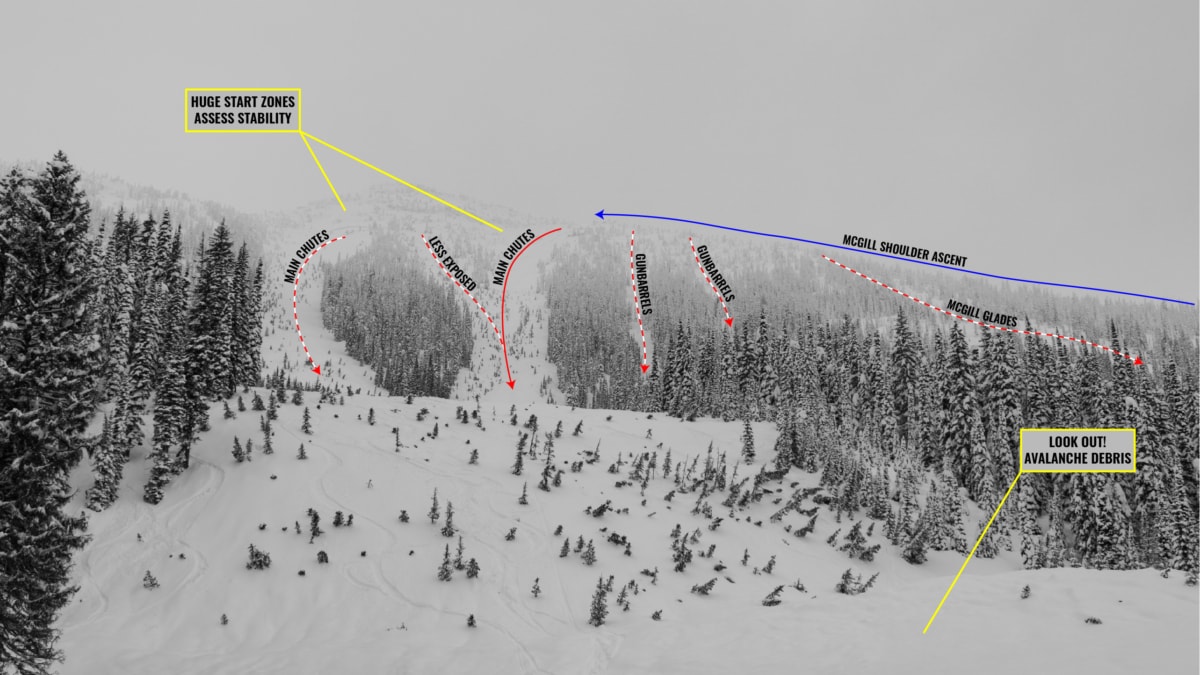
Ready for lap two, we slapped our skins back on at 1600m, where the trees thin out. We wrapped around the shoulder to connect with our original uptrack, now almost icy due to skier traffic over the last hour. We sped up the track, passing a few groups along the way. After all the trail-breaking work, climbing on an established uptrack was an absolute breeze. At 2130m, we traversed once again and crossed above the first chute to ski the second. Only perform this traverse after assessing snowpack stability since it exposes you to two huge start zones with very real consequences.

We clipped into our bindings and glided downhill. Again, the snow was sublime. We skied past the avalanche debris and into some old growth that opened up into pillowy clearings. I recommend following the slope’s fall line, straight down from the chutes. It lines up the clearings perfectly. Once we hit the Bostock Trail – easy to miss in all the excitement – we followed the trail back to the parking lot, heading generally SE.
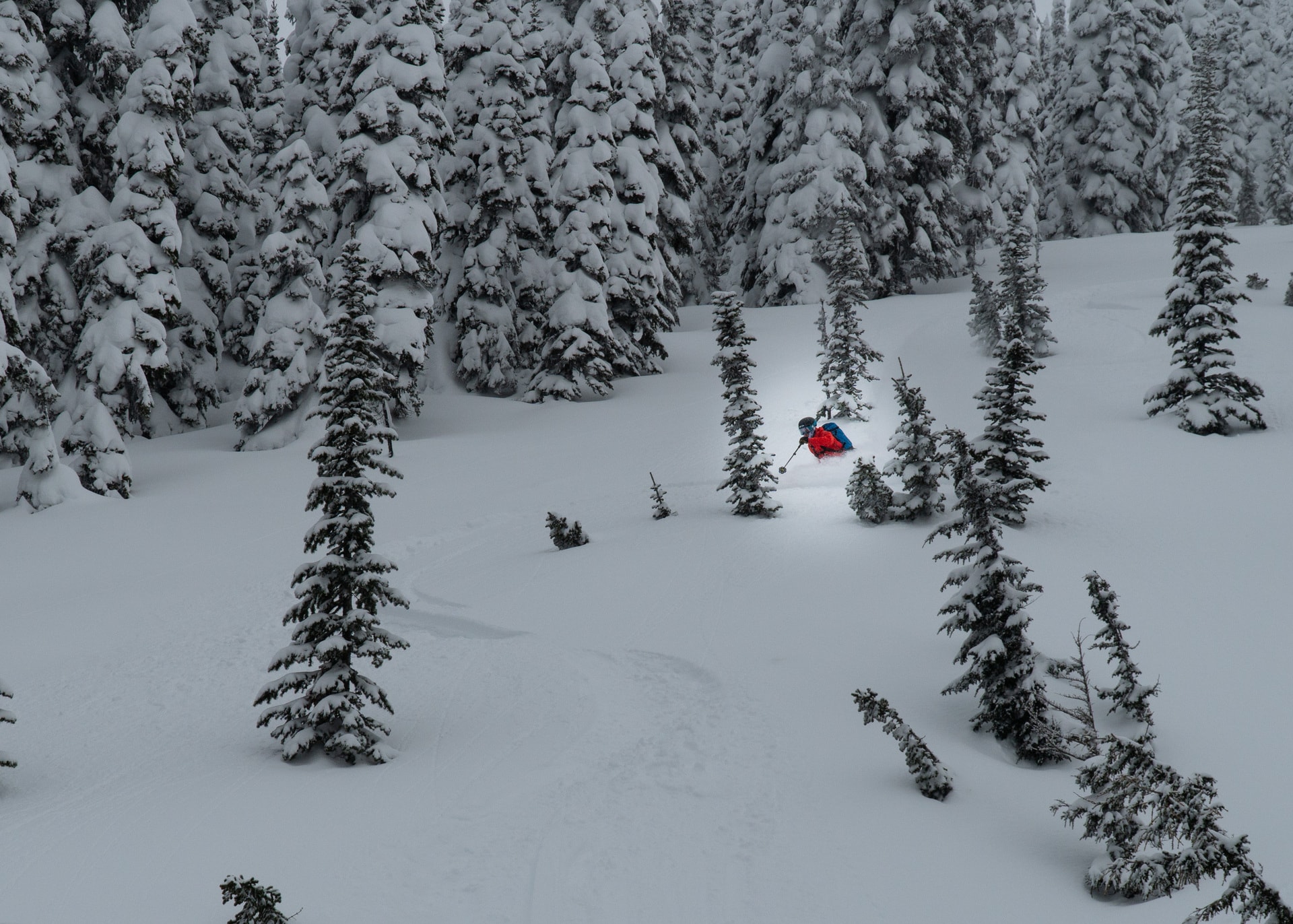
Route Info
For more beta on my adventures, check out the Route Map. This online map interface is a repository of Beyond Our Peak’s published ski touring and mountaineering routes. It’s the best way to browse through trip reports. Give it a shot!
